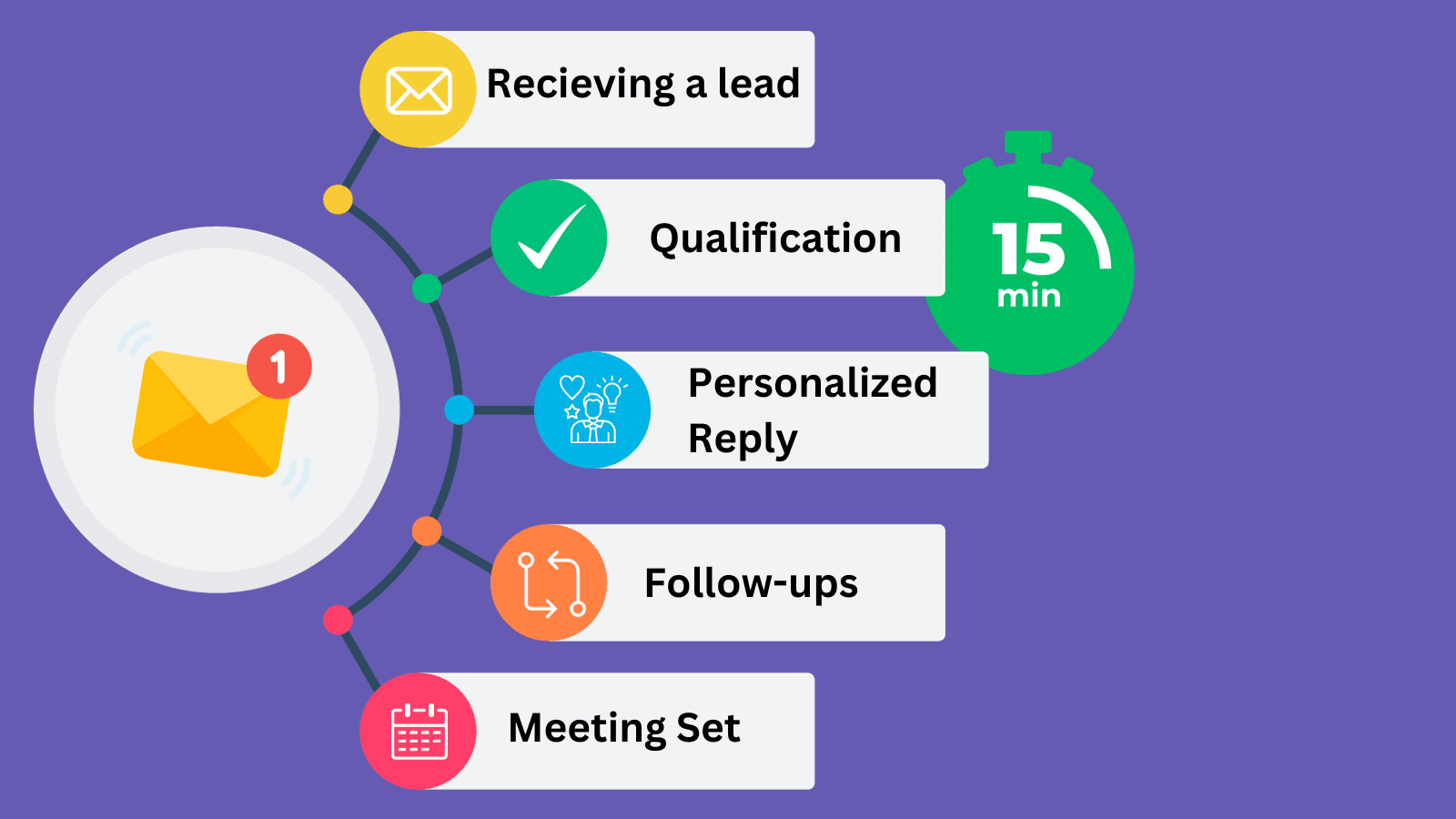
No reply to your first email? Don’t worry. This guide will help you write follow-up emails that get responses.
Email communication is crucial in business, but its overuse lately, has made it challenging to master. We’ll learn how to write emails that people want to answer. Whether for work or personal use, these tips will improve your email skills.
Table of Contents
- Importance of Subject Lines
- Understanding the Human Aspect
- Answering Common Email Questions
- Crafting the Perfect Subject Line
- Examples of Email Subject Lines
- Best Practice for Effective Follow-ups
- Integrating Technology in Your Emails
- Evolving Your Email Communication
1. The Importance of Subject Lines in Follow-Up Emails
Your follow-up email’s subject line is key in business. It needs to stand out in a crowded inbox, spark curiosity, and accurately represent your email’s content.
- Visibility: Your subject line must make an immediate impact in a sea of emails.
- Igniting Curiosity: Curiosity should be more than eye-catching, it must make the recipient want to read more.
- Accurate Representation: The subject line must reflect the email’s content correctly.
2. Understanding the Human Aspect
The Personal Touch in Professional Emails Communication
Remember, there’s a person at the other end of every email. Understanding this human aspect is vital, especially in follow-ups.

- Acknowledging Individual Contexts: Every recipient of your email is navigating their own professional landscape, filled with priorities, deadlines, and pressures. Recognizing this individual context can help in tailoring your message and subject line to be more empathetic and relevant. For instance, acknowledging a recent achievement or a busy period they might be going through can show that you see beyond the business aspect.
- Personalization Beyond Names: While including the recipient’s name in the subject line is a good practice, true personalization delves deeper. It involves understanding the recipient’s interests, their past interactions with you, and their potential needs and challenges. This understanding can shape not just the subject line but the entire tone and content of your email, making it more likely to resonate and elicit a response.
- Empathy and Respect: Every follow-up email should convey respect and understanding for the recipient’s time and situation. This means avoiding overly aggressive or demanding tones and instead opting for language that is courteous, patient, and considerate. A subject line like “Hoping this is a good time to revisit [topic]” can be more effective than a straightforward “Following up on [topic].”
By incorporating these elements of human understanding and empathy, your follow-up emails can become more than just a means to an end. They transform into a tool for building stronger, more respectful, and mutually beneficial professional relationships.
3. Answering Common Questions
Here are the answers for the most common questions regarding email follow-ups.
- Formulating a Response-Driven Subject Line: When following up after no response, the subject line should balance directness with politeness. For instance, “Seeking your valuable feedback on [specific topic]” or “Hoping to discuss further: [specific matter]”.
- What to Include in the Subject of a Follow-Up Email: The subject line should be a beacon of clarity and relevance. If possible, personalize it to resonate more with the recipient. For example, you might write “Your insights vital for [topic]” or “Following up on our conversation about [specific matter]”.
- Polite Follow-Up on Unanswered Emails: Respect and courtesy are your best allies here. Use language that is understanding and considerate, like “Revisiting our previous discussion on [topic]” or “Your thoughts on [specific query] would be invaluable”.
- Subject Line for a Catch-Up Email: Catch-up emails require a blend of professionalism and warmth. Consider “Reconnecting about [topic]” or “Eager to get your perspective on [specific issue]”.
4. Crafting the Perfect Subject Line
Creating an effective subject line means striking the right chord with your recipient. Keep it personal, clear, and concise.
- Personal Touch: Adding a personal element, like the recipient’s name or a reference to a past interaction, can make a significant difference.
- Unambiguous Purpose: Your subject line should leave no doubt about the intent of your email.
- Short and Sweet: Aim for a length that ensures visibility in most email clients.
5. Examples of Email Subject Lines by Follow-Up Topics
Follow-up emails can be varied in nature, depending on the purpose and context of your communication. Here are four categories of follow-up emails, each with three specific subject line examples:
- Sales and Business Development Follow-Ups These emails are crucial for maintaining momentum in sales or business development processes. The subject lines should be compelling and action-oriented.
- “Checking in: Next Steps for Our Collaboration on [Project/Service]”
- “Re: Proposal Feedback Request for [Project/Service Name]”
- “Awaiting Your Thoughts on Our Last Discussion about [Product/Service]”
- Networking and Relationship Building Follow-Ups Such emails aim to nurture and strengthen professional relationships. Whether it’‒s post-networking event, meeting, or conference this examples will help.
- “Great Connecting at [Event Name]: Let’s Explore Opportunities”
- “Following Up from Our Meeting: Next Steps in Collaboration”
- “Revisiting Our Conversation at [Event/Place] about [Topic]”
- Job Application and Interview Follow-Ups These follow-ups are sent after job applications or interviews, aiming to keep the candidate’s profile active in the recruiter’s mind.
- “Enthusiastic to Proceed: Following Up on My Application for [Job Title]”
- “Post-Interview: Eager to Contribute as [Job Title/Role]”
- “Seeking Update: My Interview for [Job Title] on [Date]”
- Customer Service and Support Follow-Ups These emails are sent to customers post-interaction to ensure continued satisfaction and to address any pending issues or queries.
- “Feedback Request: Your Recent Experience with [Product/Service]”
- “Ensuring Satisfaction: Follow-Up on Your Recent [Product/Service] Issue”
- “Checking In: Resolution Status of Your [Specific Issue] Query”
- Customer Service and Support Follow-Ups These emails are sent to customers post-interaction to ensure continued satisfaction and to address any pending issues or queries.
- “Feedback Request: Your Recent Experience with [Product/Service]”
- “Ensuring Satisfaction: Follow-Up on Your Recent [Product/Service] Issue”
- “Checking In: Resolution Status of Your [Specific Issue] Query”
Each of these categories addresses a different facet of professional email communication. The subject lines are crafted to be specific, engaging, and tailored to the purpose of the follow-up, enhancing the likelihood of receiving a response and furthering the respective communication goals.
6. Best Practices for Effective Follow-Up Emails

Timing, context reminders, and brevity are key. Keep your messages focused and to the point.
- Optimal Timing: Timing can be as crucial as the content. A well-timed follow-up can mean the difference between a response and another round of silence. As a general rule, you would send the first follow-up 48h after the first email. On urgent topics you can follow-up after 24h.
- Contextual Reminder: It’s often helpful to remind the recipient of your previous communication and the context of your follow-up.
- Brevity and Precision: Lengthy emails can be off-putting. Keep your message focused and concise.
Strategies to Boost Email Engagement
- Audience-Specific Follow-Ups: Tailoring your follow-up based on the recipient’s profile and your previous correspondence can significantly increase engagement.
- Subject Line Experiments: Don’t hesitate to test different subject lines to gauge their effectiveness.
- Encourage Interaction: Include a clear call-to-action to prompt a response, whether it’s answering a question or agreeing to a meeting.
7. Integrating Technology in Your Email Strategy
Leveraging technology in your email strategy is not just an advantage, it’s a necessity.

Advanced Email Tracking Tools
Email tracking tools go beyond just telling you if an email was opened. They can provide detailed analytics such as the number of times an email was opened, the device used, and even the location of the recipient.
- Optimal Timing Insights: By analyzing open rates at different times, you can identify the most effective times to send emails.
- Content Engagement Analysis: Track which parts of your email are most engaging, helping to refine the content for future campaigns.
Comprehensive CRM Systems
A robust CRM system is more than a database of contacts. It’s a powerful tool that can integrate with your email platform, providing a holistic view of your interactions with clients or prospects. It helps you keep track about of the past interactions to make your follow-ups more relevant and personalized.
AI Tools in Email Communication
AI tools are transforming email communication, making it more efficient and effective. From AI-driven content creation to automated responses, these tools can significantly enhance your email strategy.
- AI-Driven Content Creation: Tools like ChatGPT offer the ability to generate compelling email content, draft creative subject lines, and even suggest personalization elements based on the recipient’s profile.
- Text Analytics Tools like Hemingway: Improve your email’s readability and engagement. Hemingway, for example, helps refine your writing to be clear, concise, and impactful.
- Behavioral Insights with AI: Can analyze past email interactions to predict the best strategies for individual recipients, enhancing the personalization of your follow-ups.
- Personalization Tools: Tools like Persuwise can help create highly personalized content, increasing the chances of engagement and response.
- Automation for Efficiency: Automate repetitive tasks like follow-ups or responses to common queries, allowing you to focus on more strategic aspects of your email campaigns.
Embracing technology like advanced email tracking tools and comprehensive CRM systems can provide deep insights into how your recipients interact with your emails, enabling you to fine-tune your follow-up strategies for better results. AI Tools are the most recent technology that can help you get results. From ChatGPT to Persuwise or Hemmingway and a multitude of other tools, you have where to choose.
8. Evolving Your Email Communication Approach
The finesse of follow-up emails lies in maintaining persistence without being overbearing. A meticulously crafted subject line is a vital component of this delicate balance, serving as your first point of engagement and a potential catalyst for fruitful business interactions.
Remember, the impact of a well-constructed subject line extends beyond just opening the email; it sets the stage for ongoing communication. Employ these detailed insights and strategies to create subject lines that not only capture attention but also build bridges for effective and meaningful business communications.



